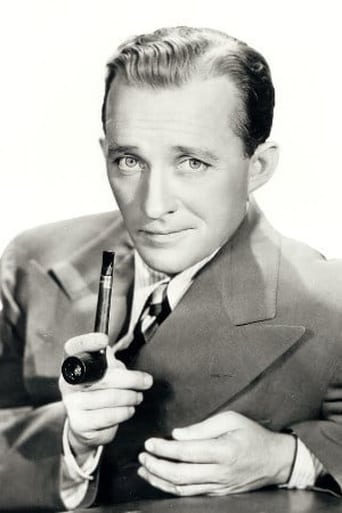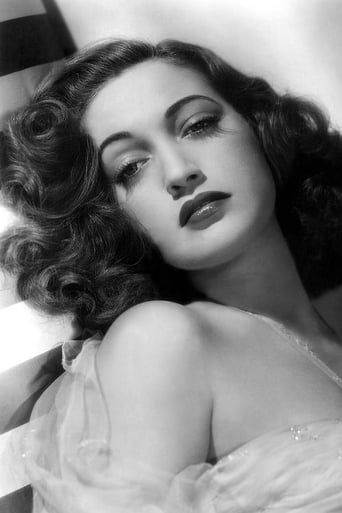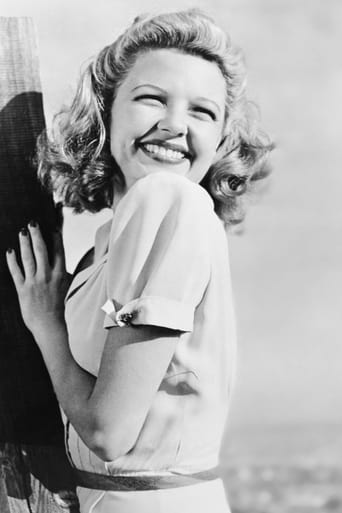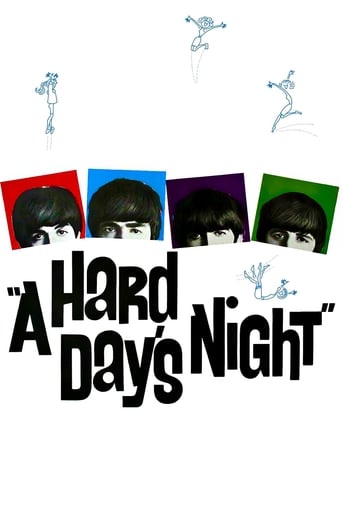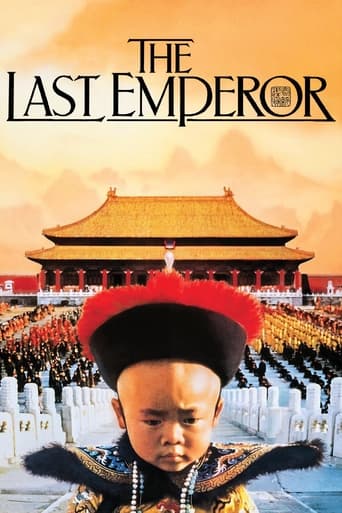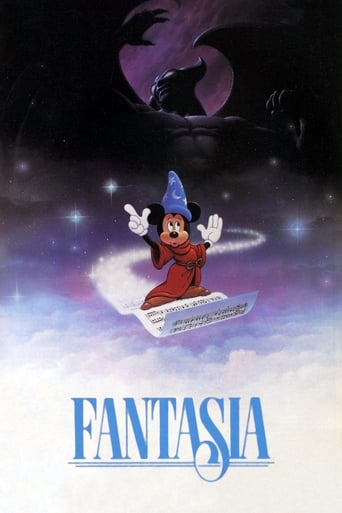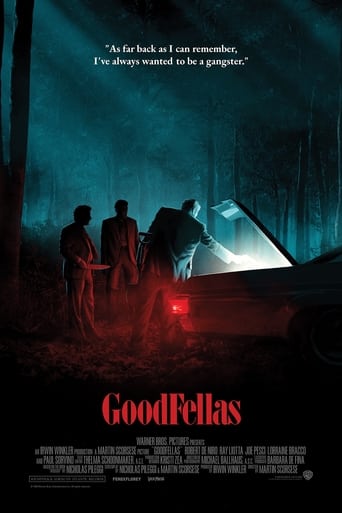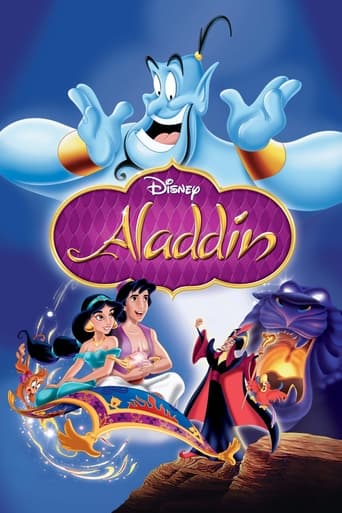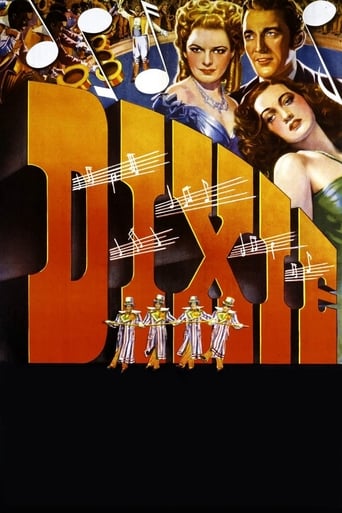
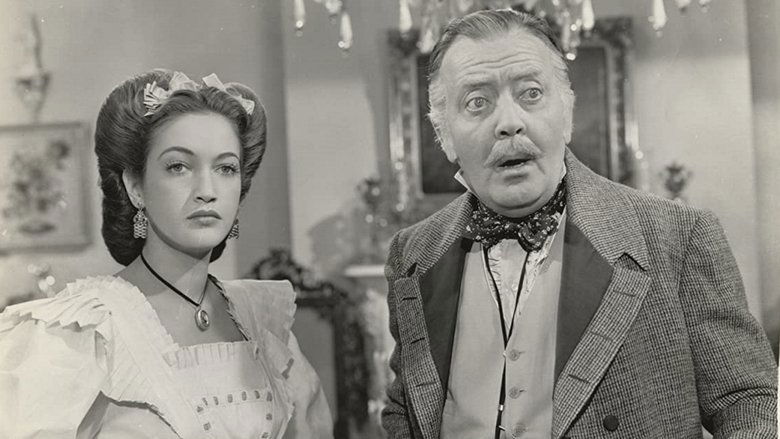
Dixie (1943)
A young songwriter leaves his Kentucky home to try to make it in New Orleans. Eventually he winds up in New York, where he sells his songs to a music publisher, but refuses to sell his most treasured composition: "Dixie." The film is based on the life of Daniel Decatur Emmett, who wrote the classic song "Dixie."
Watch Trailer
Cast


Similar titles
Reviews
Powerful
Brilliant and touching
A Major Disappointment
I like movies that are aware of what they are selling... without [any] greater aspirations than to make people laugh and that's it.
DixieThroughout history there has been hardships for African Americans. Slavery, obtaining human rights, and discrimination are examples of the hard times that African Americans have gone through. Many movies that were made around the 1940's can be offensive to many African Americans because these hardships such as slavery and discrimination are portrayed within them. Within the comical musical Dixie directed by A Edward Sutherland, 1943, it lets its viewers see and recognize what the time period was really like. Although the movie was well directed, written and acted out, the truth of the time period shines through. Although this film was not made to be offensive, it is. Slavery and discrimination are shown through the song "Dixie," and by characters within the movie. When Daniel Emmett went and performed with his, at first three partners, they used makeup to paint their faces black and over exaggerate the size of their lips. They talked as if they were uneducated and didn't understand things. Also characters from the audience at first were insulted and appalled that "darkies" were performing on stage. This attitude is not make- believe. This was the reaction of people during this time period to African Americans. During this time period Minstrel entertainment was popular during the 19th century. White performers would mimic African Americans as a main attraction by coloring their faces and using makeup to make it look like they have big lips and eyes. Later African Americans did participate in there own form of festivities called the Pinkster celebrations in which black and white performers would gather and celebrate the change of the season. This would ultimately change into a primarily African American holiday that slaves and free blacks would catch up with family and friends. This gave them a chance to express and pass on their traditions and cultures. Dixie portrays the discrimination and slavery that was still going on during this time period. The racism of the audience and reference to slavery within the song "Dixie" all show how this can be offensive to a wide majority of viewers. Although these are within the film, overall the film does a good job at showing what the time period was like and had a good story.
DIXIE (Paramount, 1943), directed by A. Edward Sutherland, capitalizes on the then current trend of musical biographies of popular songwriters of the twentieth century, a cycle that appeared to have begun with the life of George M. Cohan in YANKEE DOODLE DANDY (WB, 1942). Unlike this and others made during this period, DIXIE goes back a century, prior to the Civil War in fact, depicting the life of a composer named Daniel Decatur Emmett. His life-story is as unknown as his name itself. The fictional screenplay does toy with the facts before leading to the purpose of its film title, the composition that's to become Emmett's most recognizable American song of all, "Dixie." Bing Crosby, one of Hollywood's top box office attractions, is properly cast as Dan Emmett. It reunites him with HOLIDAY INN (1942) co-star, Marjorie Reynolds, and re-teams him opposite Dorothy Lamour, in her only film opposite Crosby outside from the seven "Road to" comedies all featuring Bob Hope as part of the funny trio.Dan Emmett's life is portrayed more to the personification of Çrosby himself, that of a good-natured singer/composer whose only weakness is his forgetfulness, especially when it comes to leaving his lit up smoking pipe around that causes a fire. He is engaged to Jean Mason (Marjorie Reynolds), a beautiful blonde Southern belle whose father (Grant Mitchell) disapproves of their courtship because he feels Dan to be irresponsible and won't amount to anything. Mason's more convinced now after Dan's lit-up pipe has caused the burning and destruction of Mason's old Kentucky home. However, Mason consents to Jean's marriage only if Dan can prove himself capable by doubling his $500 life savings to $1,000 within six months. (A similar opening lifted from the more familiar Fred Astaire musical, SWING TIME, in 1936). Leaving his clerical job, Dan seeks his fortune in New Orleans. While riverboat bound, he loses all of his $500 to Mr. Bones (Billy De Wolfe), a suave actor and cardsharp. After discovering that he had been cheated, he sets out to find Mr. Bones. Instead of beating him for the return of his money, composer and actor form a partnership leading to the origins of what was to be known as a Minstrel Show. Dan, who has already encountered Millie Cook (Dorothy Lamour) at the boarding house to whom Bones and other out-of work actors (Lynne Overman and Eddie Foy Jr.) owe back rent for their lodgings to her trusting father (Raymond Walburn), finds himself in love with her, in spite that she's the aggressor who made the first move. Dan decides to return to Kentucky and break his engagement to Jean. Upon his return, Dan finds the girl he once loved to be a victim of a crippling disease, polio, that puts him in a difficult situation as to which girl he should marry, and which should get his swan song.Oddly enough for a life-story about a composer, one would expect a handful of selections by Emmett himself, however, with the exception of "Old Dan Tucker," and "Dixie," many were by others, new ones by James Van Heusen and Johnny Burke. The motion picture soundtrack includes "Sunday, Monday or Always," "Swing Low, Sweet Chariot," (both sing by Bing Crosby); "Kinda Peculiar Brown" (sung/performed by Eddie Foy Jr. and Lynne Overman); "Old Dan Tucker," "The Last Rose of Summer," "She's From Missouri," "Let the Minstrel Show You How," "Kinda Peculiar Brown" (dance number); "The Horse That Knew the Way Back Home," "If You Please," "Sunday, Monday or Always," and "Dixie." While "Dixie" is the song in question, "Sunday, Monday or Always" is the film's most romantic ballad, and one of many most associated with Crosby. The Lynne Overman and Eddie Foy Jr. number early in the story is another highlight.So is it true, as depicted on screen, that the birth of the minstrel show was due to white actors acquiring black eyes in a fight to cover up their bruises by darkening themselves up with cork? Hard to tell since minstrel shows have become part of American culture that remains to be a controversial issue. How much is true about the Mr. Bones character as portrayed by Billy DeWolfe (in his screen debut) is another issue. His amusing scenes, however, come off quite well, at best when cheating at cards, and, in a sense, tasteless, when obtaining a free meal in a restaurant by placing a cockroach in his food before being nearly finished, then complaining the "incident" to a waiter. The result to this colorful production finds Crosby satisfying, as always; Reynolds quite sympathetic; DeWolfe, Overman and Foy comical delights; with Lamour leaving a lasting impression long after the finish of the film as she joins in with other proud southerners singing to Emmett's immortal song of the south, "I wish I was in Dixie, hooray, hooray!!!" in full camera closeup.Less dramatic than composer Stephen Foster's interpretation in SWANEE RIVER (1939), each film has benefited from its lavish Technicolor. During the sequence depicting Emmett's Virginia Minstrels as the troupe performs in an opera house to a sophisticated audience, where the song, "Dixie," is to be introduced, a patron (Norma Varden) observing the show quips about the show to be of "such poor taste." Due to extensive use of minstrel show numbers recapturing that bygone era from which this film is based, is the sole reason why DIXIE hasn't aired on television since the 1980s. A video copy, however, was obtained by a private collector from which this review is based. How DIXIE succeeds or fails if seen today depends on the individual viewer. (***)
Dixie is about a man, Dan Emmett, who goes to New Orleans, Louisiana to try and make it big. He goes to New York to try and sell his songs, but refuses to sell one very important one, "Dixie." The movie stars Bing Crosby as Dan Emmett, Dorothy Lamour as Millie Cook, Billy De Wolfe as Mr. Bones, and Marjorie Reynolds, as Jean Manson. There are many other characters in the movie, but these were the key ones. Dixie was directed by A. Edward Sutherland. The movie was released in 1943, by Paramount Pictures. Dixie has many settings. The movie starts off in Kentucky, where Dan Emmett is telling the love of his life that he is going off to New Orleans to try and become famous so that him and her can finally get married and have a life of their own. On his way to New Orleans, Dan meets a man named Mr. Bones. Mr. Bones is a con man. He conned Dan out of $500. They become partners and come up with an idea of a show. The type of show that they created was called a Minstrel Show. Minstrel Shows were when white men performed in "blackface." Minstrel shows were made to be funny. The men would completely paint their faces except around their eyes and mouth to make them look like clowns. In this time black men were not allowed to perform on stage, especially with white men. Dan meets Millie Cook and falls in love with her, and promises to marry her. He then realizes that he must go back home to Kentucky and tell Jean his already fiancée that they weren't going to get married. When he arrives there he sees that Jean is in a wheelchair and is not able to walk by the paralyzing sickness. He then promises Jean that no matter what they would get married. He writes to Millie telling her this. Jean and Dan go to New York where they try and make a life together. Dan tries and sells his songs, but has a hard time. He ends up selling 10 of his songs for $100. The only one he didn't want to give up was the song that he wrote "Dixie." Mr. Cook, Millie's father, comes to New York and asks Dan to come back to New Orleans with his new bride. This is when Jean finds out that Dan and Millie were engaged. They go back to New Orleans where they start another show of the same genre, minstrelsy. This is when Dan is finally able to use the song that he had been trying to put to the show the whole time, but it just didn't sound right. The movie ends with the audience singing along with the cast and the show was a hit. Between the years 1840 1920, Minstrel shows were put on all over the United States, but mostly in the South. "The American musical has one shameful chapter in its history minstrel shows. The most popular musical stage shows of the early and mid 19th Century, minstrelsy embodied racial hatred. Both white and black performers donned blackface, and audiences of all colors loved it. Minstrel shows developed in the 1840's, peaked after the Civil War and remained popular into the early 1900s. Minstrelsy was a product of its time, the only entertainment form born out of blind bigotry. In these shows, white men blackened their faces with burnt cork to lampoon Negroes, performing songs and skits that sentimentalized the nightmare of slave life on Southern plantations. Blacks were shown as naive buffoons who sang and danced the days away, gobbling "chitlins," stealing the occasional watermelon, and expressing their inexplicable love for "ol' massuh." In the early 1840s, a group called the Tyrolese Minstrel Family toured the United States with a program of traditional mittel-European folk songs. Four unemployed white actors decided to stage an African-American style spoof of this group's concerts. Calling themselves Dan Emmett's Virginia Minstrels, their blackface revue premiered at New York's Bowery Amphitheatre in February 1843. Emmett, Frank Bower, Frank Pelham and Billy Whitlock became the first troupe to offer a full evening of blackface variety entertainment. With their chairs in a simple semi-circle, the quartet offered a fresh combination of songs, dances and comic banter, creating cartoonish Negro caricatures. Most historians mark this production as the beginning of minstrelsy. Companies continued to perform in both North and South throughout the Civil War, with the minstrel tune "Dixie" becoming an unofficial anthem for the Confederacy. After the war, minstrelsy remained popular, and many skits took a sentimental view of the lost world of plantation slavery. Although African Americans were forbidden by law to perform on stage with whites in many states, some companies secretly included blacks. As laws changed, several all-black minstrel companies toured America and Great Britain. Black performers still had to wear blackface makeup in order to look "dark enough," performing material that demeaned their own race. Despite such drawbacks, minstrelsy provided African American performers with their first professional stage outlet" (Kenrick).The movie started out a little slow, but as the movie went on I got more and more interested in the story line and the plot. It was interesting to learn about the Minstrel shows and how they were performed, and why they were performed. I think that the movie was a little controversial, because of the fact that it poked fun and put down blacks. I honestly don't understand how people could have hated a group of people. It was degrading to blacks.
Paramount finally gave Bing Crosby technicolor in this 1943 film, presumably based on the life of Daniel Decatur Emmett, minstrel man and composer of many 19th century songs like Turkey in the Straw, Old Dan Tucker, and of course, Dixie.Seeing this film today and realizing that the song Dixie is a bad reminder of slavery for Afro-Americans and that minstrel shows in and of themselves are not so subtle examples of racism the film ain't recommended by this writer. It's a pity because technically the film is flawless, good writing, directing and acting.Crosby also sings one of his most famous movie songs, Sunday, Monday, or Always in this and the recording by Decca is an interesting story. For most of 1943 into 1944 the musicians union went on strike against the record companies. This played hell on Frank Sinatra who had just signed a contract with Columbia Records after leaving Tommy Dorsey. Bing was already established and Decca re-issued his old platters up to a point. Sunday, Monday or Always was such a mega-hit from the film that Decca got Crosby to record it with the Ken Darby Singers doing an a capella background. The flipside was If You Please also from this film. Columbia did the same thing with Sinatra for the songs from Higher and Higher. Both Crosby and Sinatra were accused of not honoring the musician's picket line and the practice was discontinued. But Sunday, Monday or Always became one of Bing's million sellers.One incident from the film is true. The song Dixie was originally written as a slow moving ballad. But a theater orchestra had to speed up the tempo to what we know today because of a threatening theater fire. That tempo change made it a hit and the rest as they say is history.Dixie doesn't mean to be offensive, the film was made in a different time. But offensive it is.I would only see it if you are Crosby fan or as a historical curiosity.


